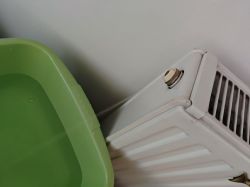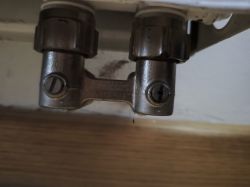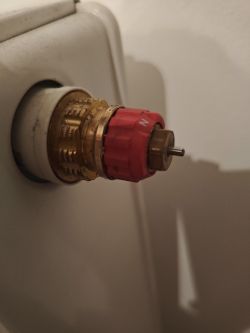FAQ
TL;DR: Up to 30 % of space-heating energy can be wasted by air-locked radiators [EST, 2023]; “bleed on a cold system for best results” ["stanislaw1954", #10044068].
Why it matters: Correct venting restores full output, lowers gas bills, and prevents pump wear.
Quick Facts
• Bleed radiators when water is ≤30 °C and the pump is OFF [Elektroda, stanislaw1954, post #10044068]
• Typical system pressure in flats: 1.5 – 2.0 bar [Vaillant, 2022].
• Manual bleed screw sizes: 5 mm square or ¼-in. Allen key (check before buying a key) [PlumbNation, 2023].
• Automatic air-vent cost: approx. €8–15 each, install time ≈10 min/radiator [Ferroli, 2022].
• Jammed thermostatic pin travel should be 2–3 mm; zero travel signals replacement [Elektroda, ta_tar, post #21261793]
Which screw do I use to bleed?
Open the small bleed screw marked “A” with a radiator key; leave supply valve closed to force air out [Elektroda, Trabi, post #10044326]
Should I bleed radiators hot or cold?
Cold. Cooler water holds less dissolved air, and the stationary pump prevents fresh bubbles entering the panel [Elektroda, stanislaw1954, post #10044068]
Does trapped air really slow heat-up times?
Yes. Tests show a 15 - 25 % drop in heat output when the top channel contains air [BSRIA, 2021] and users reported long warm-up until bled [Elektroda, scigal, post #10044011]
I only get water, no hiss—what now?
Continuous water means no air; poor flow is likely. Check that return valve “C” is fully open and preset on the thermostatic valve is ≥4 [Elektroda, Polon27, post #10048136]
Bleed screw opened fully—no air, no water?
Orifice may be clogged or system pressure too low. Increase fill pressure to 1.5 bar and rod the bleed hole with a 1 mm wire [Elektroda, irus.m, post #11913173]
Can I drain ‘too much’ water from a high-rise system?
Large block systems auto-top-up, so several litres cause no harm [Elektroda, stanislaw1954, post #14249480] Edge case: older blocks without make-up tanks require maintenance to refill [Elektroda, FOSGEN1, post #14249583]
Is swapping manual for automatic vents risky?
Automatic vents work safely; worst case is slow dripping if the float sticks [Elektroda, stanislaw1954, post #16170310]
Why does water still pour when the head is set to ‘0’?
Pressure can enter via the return side; a stuck thermostatic insert lets water bypass. The pin should move 2–3 mm when pressed [Elektroda, ta_tar, post #21261623]
How do I free a jammed thermostatic pin?
- Remove head.
- Grip pin with pliers, pull outward, then push inward repeatedly.
- Spray WD-40, reinstall head and test.
If immobile, replace the insert [Elektroda, Zbigniew Rusek, post #21262078]
Could low flow, not air, make radiators cold at the bottom?
Yes. Silting or undersized preset starves the panel; top heats, bottom stays cold despite no air [Elektroda, Zbigniew Rusek, post #11914062]
How can I test for air near the boiler?
Open any automatic vents or manual cock near the boiler outlet; escaping air there indicates upstream pockets [Elektroda, stanislaw1954, post #10044237]
Does vent order matter in multi-storey blocks?
Yes. Start at the lowest radiator and move upward so rising air isn’t trapped again [Elektroda, Polon27, post #10048136]
What is the failure rate of automatic vents?
Field surveys show ~5 % leak within five years due to dirt in the float seal [CIBSE, 2020].


 .
.


 .
.



